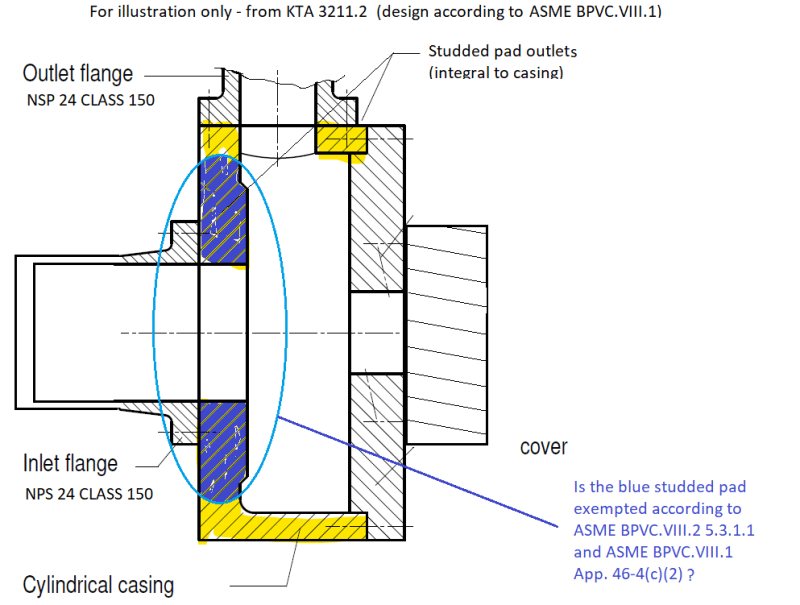Hi,
for an ASME BPVC.VIII.1 "Design By Rule" designed pressure vessel, we conduct a supplemental analysis along the requirements of Appendix 46, 46-4 DESIGN BY ANALYSIS (using the methods of ASME BPVC.VIII.2 Part 5).
One of the components of the numerical model is a Studded pad type connection designed to Div. 1 Subsection A General Requirements PART UG (i.e. UG-43(d), ...). It is not of welded construction (it is integral to the pressure vessel).
As for 5.3 PROTECTION AGAINST LOCAL FAILURE, Div.2 5.3.1.1 states "[...] These requirements apply to all components where the thickness and configuration of the component are established by using design-by-analysis rules. It is not necessary to evaluate protection against local failure (5.3), if the component design is in accordance with Part 4 (e.g., component wall thickness and weld detail per 4.2)."
Div.1 APPENDIX 46-4(c)(2) requests "[...] The exemption provided in Division 2, 5.3.1.1 is applicable to weld details in Division 2, Part 4 only. There exist weld details in Division 1 that are not permitted in Division 2 [subject to the provision in 46-3(f)]; those details are not exempt from evaluation of protection against local failure.".
[ul]
[li]Could this mean that, of all components, only welds are exempted; or that same exemptions apply, except for Div.1 weld details which are not covered in Div.2?
[/li]
[/ul]
best regards,
Cyril


![[bigsmile] [bigsmile] [bigsmile]](/data/assets/smilies/bigsmile.gif) . As I mentionned on the drawing, the illustration is for illustration only, I used it so that eveyone can have a glimpse of the general geometry of the design. We are not working for nuclear/atomic indsutry.
. As I mentionned on the drawing, the illustration is for illustration only, I used it so that eveyone can have a glimpse of the general geometry of the design. We are not working for nuclear/atomic indsutry.![[ponder] [ponder] [ponder]](/data/assets/smilies/ponder.gif)